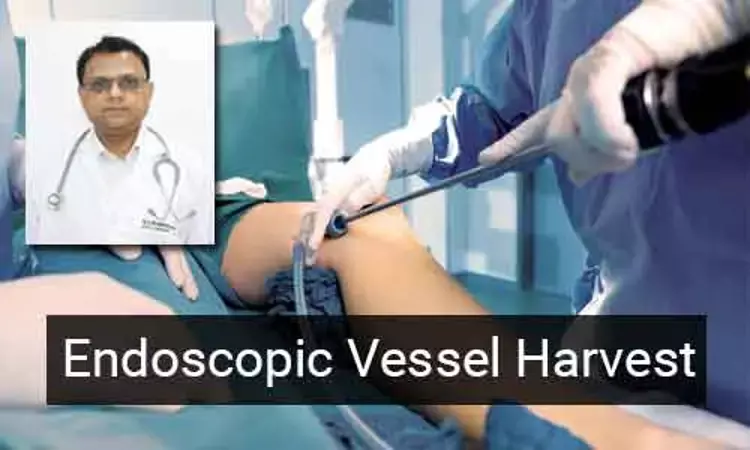- Home
- Medical news & Guidelines
- Anesthesiology
- Cardiology and CTVS
- Critical Care
- Dentistry
- Dermatology
- Diabetes and Endocrinology
- ENT
- Gastroenterology
- Medicine
- Nephrology
- Neurology
- Obstretics-Gynaecology
- Oncology
- Ophthalmology
- Orthopaedics
- Pediatrics-Neonatology
- Psychiatry
- Pulmonology
- Radiology
- Surgery
- Urology
- Laboratory Medicine
- Diet
- Nursing
- Paramedical
- Physiotherapy
- Health news
- Fact Check
- Bone Health Fact Check
- Brain Health Fact Check
- Cancer Related Fact Check
- Child Care Fact Check
- Dental and oral health fact check
- Diabetes and metabolic health fact check
- Diet and Nutrition Fact Check
- Eye and ENT Care Fact Check
- Fitness fact check
- Gut health fact check
- Heart health fact check
- Kidney health fact check
- Medical education fact check
- Men's health fact check
- Respiratory fact check
- Skin and hair care fact check
- Vaccine and Immunization fact check
- Women's health fact check
- AYUSH
- State News
- Andaman and Nicobar Islands
- Andhra Pradesh
- Arunachal Pradesh
- Assam
- Bihar
- Chandigarh
- Chattisgarh
- Dadra and Nagar Haveli
- Daman and Diu
- Delhi
- Goa
- Gujarat
- Haryana
- Himachal Pradesh
- Jammu & Kashmir
- Jharkhand
- Karnataka
- Kerala
- Ladakh
- Lakshadweep
- Madhya Pradesh
- Maharashtra
- Manipur
- Meghalaya
- Mizoram
- Nagaland
- Odisha
- Puducherry
- Punjab
- Rajasthan
- Sikkim
- Tamil Nadu
- Telangana
- Tripura
- Uttar Pradesh
- Uttrakhand
- West Bengal
- Medical Education
- Industry
Understanding 'Endoscopic Vessel Harvest' - A Minimally Invasive approach for conduit harvesting during CABG

Coronary Artery Bypass Grafting (CABG) requires the removal of a Vein or an Artery from one part of the body to be used as a 'conduit' for bypassing the blocked arteries of the Heart. The number of blockages in the Heart decides the number of bypasses required, which in turn dictates the length of the conduit (Vein or Artery) be harvested. Usually, the surgeon removes either the vein from the leg (Saphenous Vein) or an artery from the hand (Radial Artery). The incision used for Vein harvesting is usually considered the longest incision in any surgery (i.e. the entire length of the leg) and due to its length, often results in poor healing, swelling of the leg and is often cosmetically unacceptable. Radial Artery harvesting requires an incision along the full length of the forearm and is thus cosmetically unacceptable too.
Endoscopic Harvesting of these conduits (Saphenous Vein or the Radial Artery) is a very safe procedure that is accepted worldwide. Any conduit required for a bypass has to be free of damage and of adequate length so that the surgeon can complete the procedure. This requires the conduit to be harvested under vision, using a low-temperature source for coagulating (clotting) the small blood vessels, and a permanent seal for the branches of the conduit. Hence, specialized equipment is necessary for this procedure that is not normally available in a cardiac operation theatres. This includes a Laparoscopy Trolley, with a good quality camera (HD), CO2 Insufflator, monitor and an energy source like a Harmonic Scalpel or a Ligasure Cautery. In addition, one also needs a harvesting set of instruments (reusable or disposable) to actually perform the procedure. Naturally, this impacts the cost of the surgery and an endoscopic harvest costs about Rs 25000-30000 more than the normal harvest.
What is immediately visible to the patients are the small incisions, but more importantly, there is minimal bruising, thus less pain. The incisions being small are closed without any external stitches, using skin glue, hence the wound can be kept open and doesn't need a dressing at all! This technique the best and most desirable choice in all patients, but especially so amongst patients who are obese or Diabetic, where wound healing can be an issue.
As in driving any vehicle, the most important part is the "nut that holds the wheel" and thus the surgeon needs to be trained to perform this surgery. Cardiac surgeons are classically not trained to perform endoscopic work and need to learn this procedure in a simulation setting first, followed by operating on lab animals before being allowed to operate in the OT on actual patients. Overall, a well-trained surgeon can finish the procedure within 25-30 minutes with a single incision.
To conclude, I believe that every cardiac surgeon should be trained to harvest conduits endoscopically; and there will come a time when endoscopic harvesting will be standard during every bypass surgery!
The author of this article has performed 283 Radial Artery harvests and 66 Saphenous Vein harvests using this technique. While this technique is preferred for all CABG patients, the oldest patient treated by the author through this technique is 85yrs and the youngest is 38yrs old.
Dr. Manoj Pradhan is a cardiac surgeon and current working as Senior Consultant, CTVS Surgery, SL Raheja Hospital, Mahim-A Fortis Associate.
Note : The views and opinions expressed in this article are those of the authors and do not necessarily reflect the official policy or position of Medical Dialogues


